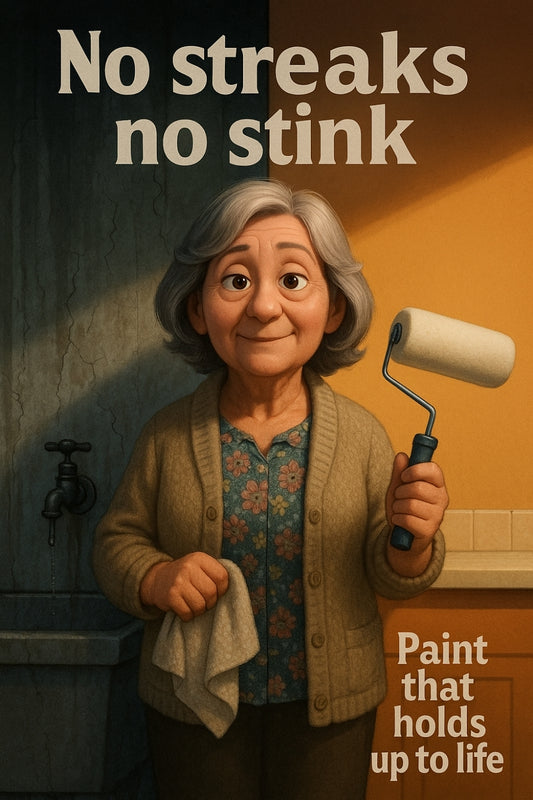
Painting Rendered Surfaces Without Cracking
Share
How to Paint Rendered Surfaces Without Cracking
The textured beauty of a rendered surface adds depth and character to a home, but painting over it? That can be a challenge. Get it wrong, and you might end up with cracks, peeling paint, and a whole lot of frustration. Luckily, there is a way to do it right, ensuring your walls look stunning for years.
Why Does Paint Crack on Render?
Before grabbing a brush, it helps to understand why paint fails on rendered surfaces. The most common culprits include:
- Trapped Moisture: Fresh render needs time to cure properly. Painting too soon can trap moisture, leading to unsightly cracks.
- Poor Adhesion: Render can be highly porous. If the wrong type of paint is used, it won’t bond properly.
- Weather Conditions: Painting in extreme heat or humidity can cause the paint to dry too quickly or cure unevenly.
How to Get the Perfect Finish
No one wants to spend hours painting, only to see cracks appear later. Follow these steps to get a finish that lasts:
1. Let the Render Cure
Patience is key. Fresh render takes about a month to fully cure, depending on the weather. Jumping in too early will only lead to bubbling and cracking as moisture tries to escape.
2. Clean & Prepare the Surface
Dirt, dust, and loose render can ruin even the best paint job. A quick wash with a hose or light scrub with a stiff brush removes debris. If efflorescence (that powdery white residue) is present, scrub it off and allow the surface to dry before painting.
3. Use the Right Primer
Skip this step, and your paint might not stick properly. A good undercoat locks in the surface and ensures even coverage. Using Haymes Ultra Premium Solashield as a base coat can provide a strong foundation before applying the final layers.
4. Pick the Right Paint
Not all paints are created equal, especially when dealing with render—which expands and contracts with the weather. For a flexible, highly durable option, Haymes Ultra Premium Solashield is designed to resist cracking and fading.
5. Apply Thin, Even Coats
Thick applications can look tempting but lead to uneven drying and future cracks. Instead, apply thin layers with a roller or a high-quality brush, allowing each coat to dry before adding the next.
6. Protect from the Elements
Windblown debris, dust, and sneaky rain showers can ruin fresh paint. Choose a dry, mild day for painting and keep an eye on the weather forecast to avoid unexpected disasters.
7. Maintain Your Painted Render
Once the job is done, regular maintenance keeps your exterior looking fresh. A gentle wash every year removes dirt and grime, while minor touch-ups prevent long-term damage.
A Painted Render That Stands the Test of Time
With the right prep, tools, and a high-quality product like Haymes Ultra Premium Solashield, you can achieve a professional, long-lasting finish on rendered surfaces. It's all about working with the material rather than against it—understanding how render behaves gives you better results, and keeps your home looking flawless for years.
Want more painting advice or the best products for your next project? Come by Strathalbyn H Hardware’s Paint Shop—it’s what we do best!
Happy painting!
Candeece

Stay Connected
Follow our Facebook Page: Strathalbyn H Hardware on Facebook



